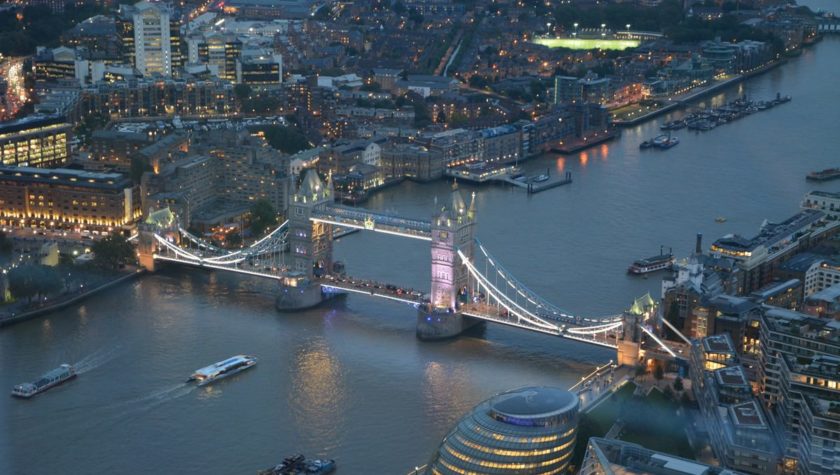Below is the full text of National Infrastructure Commission Chair Sir John Armitt’s keynote speech to the London Infrastructure Summit on 12 September in London.
Check against delivery.
“The history of our capital’s infrastructure is filled with stories of world-firsts, projects whose working lives have far surpassed original predictions, and feats of design and engineering that we all too often take for granted.
Take the London Underground network – the first metro system of its kind, up to five million passenger journeys are now made via the Tube every day, and ever since it opened in 1863 hundreds of cities from Brussels to Beijing have developed their own versions of it for their commuters.
The city’s Victorian-era sewer network, famously designed by Joseph Bazalgette, was considered forward-thinking to have been built to accommodate an increase in the population size from three to 4.5 million, but today serves as many as eight million people.
And the Thames Barrier, completed in the early 1980s, is one of the largest moveable flood defences in the world, and daily protects our city from the threat of flooding without most of us giving it a thought.
Today, the story is no different, and construction continues in the capital to meet the ever-increasing demands placed on the city’s infrastructure by residents and visitors alike.
London will reap many of the benefits that HS2 will bring, helping to cut journey times and increase rail capacity to support people looking to travel to and from the capital and across the country; and Crossrail will make it easier for travellers to get from Reading and Heathrow in the West to Shenfield and Woolwich in the East, via such key stations as Paddington, Tottenham Court Road and Liverpool Street.
But that can’t be the end of it – these two projects alone, however big, won’t solve London’s continued congestion problem. That’s why as well as backing Northern Powerhouse Rail to improve connections between cities in the North of England, I and my Commissioners have strongly supported Crossrail 2. It would mean a new and improved route from Hertfordshire in the North to Surrey in the South, would relieve congestion in some of our busiest stations including King’s Cross, Clapham Junction and Victoria, and – crucially – would support the delivery of as many as 200,000 of the new homes the capital desperately needs. We must see progress made to get the funding in place and this key project off the ground.
Aside from rail, construction of the 25km Tideway Tunnel continues Bazalgette’s work, and will reduce the amount of untreated waste that all too often ends up in the Thames.
And just last month, London joined 19 other world cities including Paris, New York and Tokyo, in pledging to make all new buildings operate at net zero carbon by 2030.
But when we look to the future, as well as building more we also need to consider how to make the most of the capacity we already have.
In July we published the National Infrastructure Assessment. The first of its kind for the UK, it offers advice to Ministers, Mayors and other decision-makers across the country on how best to meet the UK’s needs up to three decades ahead and across a range of sectors including energy, transport and digital communications. Far from offering an unaffordable wish-list of projects, it instead provides a clear strategy for how we make infrastructure decisions that will have a lasting impact long into the future.
Readers of our report – which I hope include many of you in the audience today! – will notice a striking similarity between what we are recommending for cities across the country, and what has been happening here in London.
Just as we look to improve rail connections between our cities, we also need to improve the transport offer within them, and the capital offers a model that others would love to be able to follow.
This city benefits from having a mayor, with devolved powers covering both transport and planning, funding to help keep people moving, and a system bringing together Tube, trains and buses under Transport for London. Our proposals for cities outside London offer something similar.
We want to see powers and funding devolved to the new Metro Mayors and city leaders across the country, so they can devise long-term strategies to integrate their transport networks, open up job opportunities and deliver new homes.
But that does not mean that the National Infrastructure Assessment offers nothing for our Capital – far from it. In fact, we’ve supported proposals in the Mayor’s Transport Strategy which includes improvements to bus networks, the underground and cycling infrastructure, and we want to see it backed by sustained, long-term funding for Transport for London.
Our recommendation that councils allocate a portion of their parking spaces – including on-street parking – as suitable for electric vehicle charging points will especially help Londoners looking to make the switch from petrol and diesel.
Unlike residents in many other cities, drivers in London often do not have access to off-street parking, and so this extra provision will be of particular benefit to them.
This will help improve take-up of this new technology, and because electric vehicles will replace polluting petrol and diesel cars, it will also play a big part in improving air quality in the capital.
And as a city relying on an extensive, ageing system of underground pipes, our proposals in favour of a target for water companies to reduce leakages by 50 per cent by 2050 should at least help improve the water supply network, while more needs to be done to reduce the increasing risk from surface water flooding.
With that in mind, I was encouraged to see Thames Water’s revised plans last Monday [3 September] adopting our leakage target, alongside their continued roll-out of smart water meters and a range of investments on sustainable drainage.
But while any Londoner would stand here and rightly tell you that there is still room for improvements, and while these proposed measures from our National Infrastructure Assessment would bring significant benefits, that doesn’t mean we can’t still take pride in our capital’s infrastructure network.
Cities across the world regularly look to where London leads for inspiration in maintaining and improving themselves as vibrant and exciting places to live. That can range from attracting the brightest and best talent across a range of industries, to providing a thriving and diverse arts and culture scene –
but for many cities, in the UK as well as abroad, it can also include simply looking to how London has been able to improve the way that its residents can get from A to B.
The National Infrastructure Assessment is truly national, offering recommendations that can be of benefit to the country as a whole.
But while we want to see this applied everywhere from Edinburgh to Exeter, that cannot, and should not, be at the expense of our Capital.
This city has an infrastructure history it can be proud of and one that it continues to benefit from to this day. And it’s a city that can continue to thrive long into the future.
As London continues to grow and prosper, the proposals in our National Infrastructure Assessment, if applied, could help ensure its infrastructure keeps up, as well as building on the best of the London model to deliver benefits and improve urban transport systems across the country as a whole.
Thank you.”




